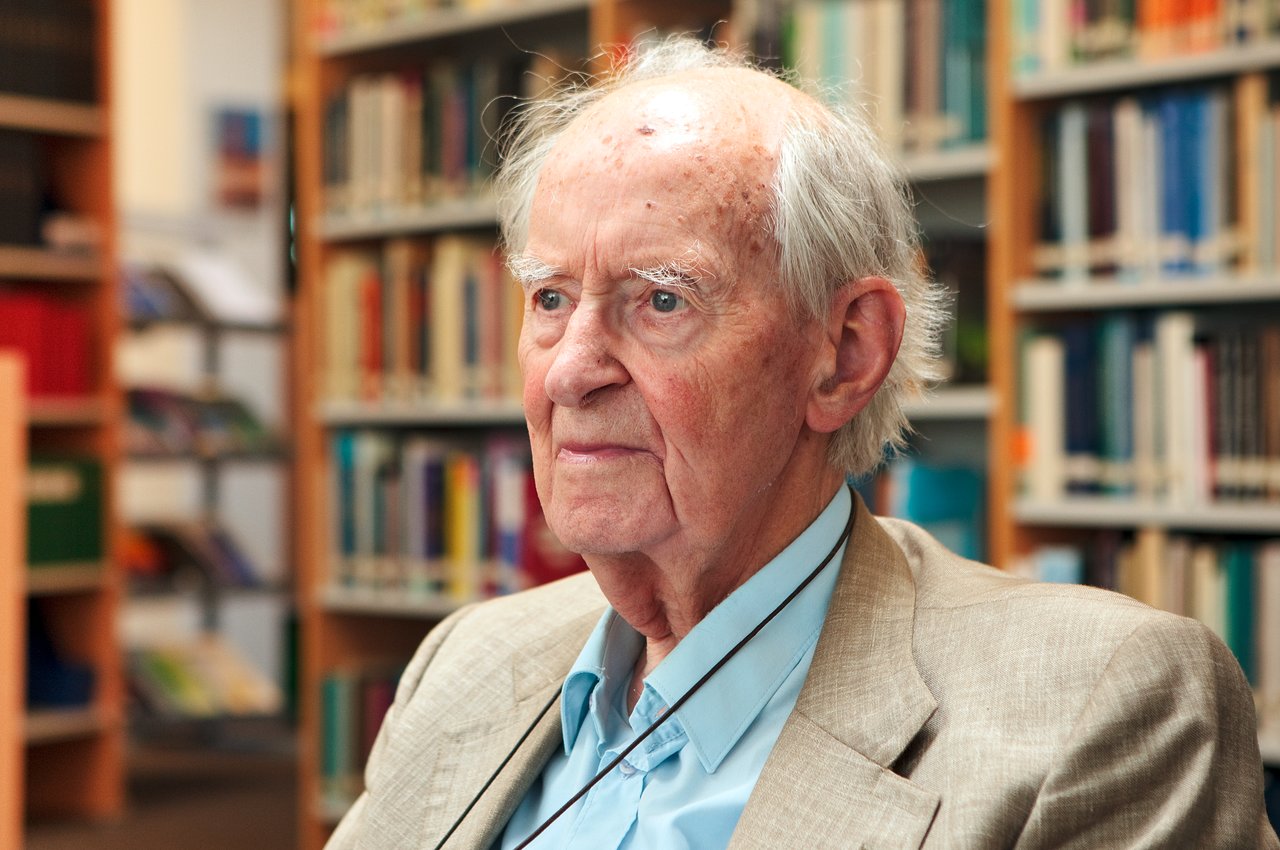De Geschiedenis van Professor Adriaan Blaauw
Professor Adriaan Blaauw werd geboren in Amsterdam in 1914. Hij studeerde in Leiden en werkte vanaf 1938 in Groningen bij Professor P.J. van Rhijn. In 1945 ging hij terug naar Leiden, maar hij voltooide zijn proefschrift kort daarna, hetgeen uitmondde in een promotie bij Professor Van Rhijn aan de RUG in 1946. Zijn proefschrift was getiteld 'A study of the Scorpio-Centaurus cluster'.
Carrière
Hij werkte in die jaren daarop tweemaal voor langere perioden aan de Yerkes sterrenwacht bij Chicago, en nam deel aan de Leidse astronometrie-expedities (nauwkeurige positiemetingen van sterren) in Kenia. In 1953 vertrok hij voor een aanstelling als associate professor aan de genoemde Yerkes Observatory en de universiteit van Chicago. In 1957 kwam hij terug naar Groningen om het directeurschap op zich te nemen van het Sterrenkundig Laboratorium 'Kapteyn'. Dat deed hij voortvarend en hij slaagde erin de enigszins in het slop geraakte Groningse astronomie weer nieuw leven in te blazen en de prominente plaats terug te geven die het onder Kapteyn zelf had gehad.
Professor Blaauw was heel nauw betrokken bij de oprichting van de European Southern Observatory (ESO), dat nu met de grootste optische telescoop ter wereld op Paranal in Chili een absoluut leidende rol speelt in de sterrenkunde wereldwijd. Van 1970 tot en met 1975 was hij er Directeur Generaal.
Na afloop van zijn termijn besloot hij naar Leiden te gaan, waar hij tot zijn pensioen in 1981 bleef. In die tijd was hij President van de International Astronomical Union (IAU). Ook leidde hij de definiering van het wetenschappelijke programma voor de uiterst succesvolle astronometrische satelliet Hipparcos. Na zijn pensioen kwam Professor Blaauw terug naar Groningen en was tot zijn overlijden als emeritus hoogleraar verbonden aan het Kapteyn Instituut.

Onderzoek
Naast zijn prestigieuze internationale posities was hij gedurende zijn hele carrière onderzoek blijven doen. Zijn professionele vakgebied betrof de studie van de structuur van ons Melkwegstelsel en de vorming van sterren. Zijn belangrijkste bijdragen waren de verklaring van de oorsprong van sterren die met hoge snelheid bewegen in ons Melkwegstelsel en de beschrijving van stervorming in zogenaamde associaties.
Na zijn emeritaat in 1981 keerde Professor Blaauw terug naar het Kapteyn Instituut in Groningen. In zijn latere jaren schreef hij boeken over de geschiedenis van IAU en ESO, maar ook enkele historische studies over Drentse boerderijen. Ook bleef hij betrokken bij het onderzoek van jonge stergroepen, van 'hardlopers' en hun relaties tot pulsars en supernovae, en hield hij een belangrijk aandeel in de wetenschappelijke discussies op het Kapteyn Instituut. Nog in zijn laatste maanden gaf hij vele uitvoerige interviews en voordrachten over de geschiedenis van de Nederlandse en de wereldwijde sterrenkunde. Hij is overleden op 1 december 2010.
Hier is het In Memoriam van prof. Blaauw te vinden.
Blaauw lezing
Elk jaar wordt de Blaauw lezing gehouden door een vooraanstaand astronoom.
